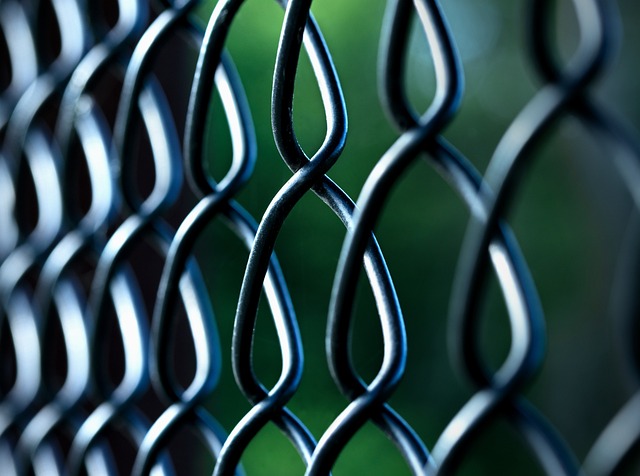In the face of relentless coastal conditions, durable wooden fencing offers a robust and aesthetically pleasing solution. This article delves into the unique challenges of coastal fencing, highlighting the benefits of high-quality, long-lasting wood options. We explore species best suited for these environments, installation techniques tailored to coastal areas, and maintenance strategies ensuring longevity. Furthermore, we discuss how well-designed wooden fences can enhance the natural beauty of coastal landscapes.
- Understanding Coastal Fencing Challenges
- Benefits of Durable Wooden Fencing
- Choosing the Right Wood Species
- Installation Techniques for Coastlines
- Maintenance and Longevity Tips
- Enhancing Coastal Aesthetics with Wood Fences
Understanding Coastal Fencing Challenges
Coastal areas present unique challenges when it comes to fencing due to their exposure to harsh weather conditions, including strong winds, salty air, and regular rainfall. Traditional fencing materials may not hold up well against these elements, leading to frequent repairs or replacements. The salt content in sea air is particularly corrosive, causing metal fences to rust over time. Additionally, the constant movement of water can erode soil and destabilize fence posts, making it difficult to maintain a secure barrier.
These challenges highlight the need for durable fencing solutions that can withstand coastal conditions. Wooden fences have long been a popular choice for their aesthetic appeal and relative ease of installation. However, not all woods are created equal; those with higher natural resistance to rot and insects are better suited for coastal environments. Treated or pressure-infused wooden fence posts and boards offer excellent longevity and provide an effective barrier against both weather and wildlife.
Benefits of Durable Wooden Fencing
Durable wooden fencing offers a range of advantages for coastal areas, making it an attractive and practical choice for homeowners and businesses alike. One of its key benefits is aesthetic appeal; natural wood provides a beautiful, timeless look that complements any landscape design. The material’s versatility allows for creative designs, from traditional styles to modern, custom-cut patterns, ensuring properties along the coast have unique and visually appealing boundaries.
Furthermore, wooden fencing is an environmentally friendly option. It is renewable and recyclable, reducing the carbon footprint of construction projects. Unlike some synthetic materials, wood can be sustainably sourced and processed, making it an eco-conscious choice. Additionally, durable wooden fences require minimal maintenance, saving time and money in the long run, which is particularly advantageous for coastal properties that may face harsh weather conditions.
Choosing the Right Wood Species
When selecting wood for coastal fencing, choosing the right species is paramount. Softwoods like cedar and redwood are popular choices due to their natural resistance to rot and insects, making them ideal for harsh marine environments. These woods also have a beautiful, distinctive grain that enhances curb appeal.
However, it’s essential to consider that not all softwoods are created equal. Look for high-density varieties with tight knots, as these tend to be more durable against the constant exposure to salt air and moisture. Additionally, treating the wood with preservatives or sealing it after installation can significantly extend its lifespan, ensuring your coastal fencing remains robust and attractive for years to come.
Installation Techniques for Coastlines
When installing durable wooden fencing in coastal areas, specialized techniques are essential to ensure longevity and resilience against harsh weather conditions. One key approach is to use a post-and-rail system, where sturdy posts are securely anchored into the ground, providing a solid foundation. These posts should be made from treated timber or steel-reinforced wood to withstand corrosion from salty air. Rails are then attached at regular intervals, offering structural support and creating a secure barrier.
Another technique involves integrating grounding systems and anchor bolts to prevent fence movement during storms. The use of helical piles, which are screwed into the soil, offers stability and flexibility, allowing the fence to absorb some force without damage. Additionally, choosing the right wood species treated for moisture resistance is vital. Proper installation methods, including sealing joints and regular maintenance, will contribute to the overall durability and appearance of the wooden fencing in these challenging environments.
Maintenance and Longevity Tips
When it comes to durable wooden fencing for coastal areas, proper maintenance is key to ensuring longevity. Regular cleaning with a soft brush and mild detergent can help remove salt buildup and prevent stains. Repainting or staining every few years not only enhances aesthetics but also shields the wood from damaging UV rays and moisture.
For maximum durability, consider treating your fence with water-repellent coatings designed for exterior use. Keep an eye out for any signs of rot, warping, or cracking, addressing these issues promptly to prevent further damage. By following these simple maintenance tips, you can extend the life of your wooden coastal fencing and enjoy its beauty for years to come.
Enhancing Coastal Aesthetics with Wood Fences
Wooden fences have long been a popular choice for property owners, but when it comes to coastal areas, durable and weather-resistant materials are essential. Enhancing the natural beauty of the coast with wooden fencing is an excellent way to create a harmonious environment. The right type of wood, treated properly, can blend seamlessly with the surrounding landscape, offering both privacy and aesthetic appeal.
Coastal regions often boast vibrant landscapes with diverse plant life and unique geological features. Wooden fences, when designed with these elements in mind, can complement the natural setting while providing much-needed boundaries. From rustic styles that embrace the raw beauty of wood to more contemporary designs, there are countless options to choose from, ensuring every property owner can find a fence that reflects their personal taste and contributes to the overall charm of the coastal neighborhood.
